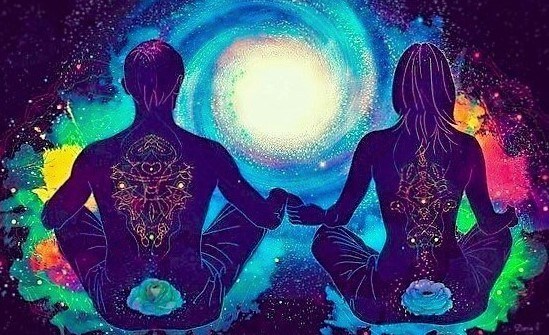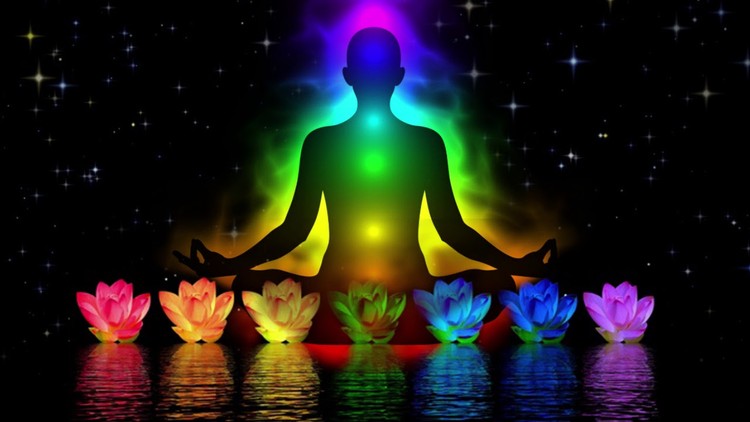404 views
In this post, we will talk about the Stages of meditation.
Is it sitting quietly with eyes closed called meditation?
Is focusing on a single object called meditation?
Stages of meditation
Meditation or inner work is a very commonly used word these days.
Let’s understand what are the Stages of meditation.
Meditation is another name for Dhayana.
In our day-to-day life, when we do some carelessness, then our father or mother or others will say Be focused(“Dhayan se Karo”), or Where is your focus(“Dhayan Kaha hai tuhara”) or You are not focusing(“Dhayan nahi de reha”).
So what is this Dhayan that people are referring to?
What is the way to give more Dhayana?
Are Meditation and Dhayan the same?
Patanjali yoga sutra

Let’s get to know what Sage Patanjali wrote in ‘Patanjali yoga sutra’ about the Stages of meditation.
Sage Patanjali documented everything about yoga in a document named “Patanjali yoga sutra”.
‘Patanjali yoga sutra’ says that yoga has eight steps and thus yoga is known as Ashtanga yoga.
These eight steps are Yama, Niyama, Asana, Pranayama, Pratyahara, Dharana, Dhyana, Samadhi.
As we can see that in yoga, Dhayan or meditation is mentioned as the 7th step.
Do you think it is worth to know that, what are the six steps that come before Meditation?
Do you think it is worth knowing that what we are practicing is really meditation or is it some kind of hallucination?
Do you think it is worth to know that how much time should we spend in meditation daily so that we also maintain a balance with the outside world to do our daily tasks, and activities, and between our spiritual life?
If yes then let’s first discuss briefly the eight steps of Ashtang yoga.
Yama

The first in the Stages of meditation is Yama, which deals with one’s ethical standards and sense of integrity, focusing on our behavior and how we conduct ourselves in life. The five Yamas are:
- Ahimsa: nonviolence
- Satya: truthfulness
- Asteya: nonstealing
- Brahmacharya: continence
- Aparigraha: non-possessiveness
Don’t worry, we will not ask you to follow Yama.
Niyama

Next in the Stages of meditation is Niyama, which deals with self-discipline and spiritual observance.
The five Niyamas are:
- Saucha: cleanliness
- Santosa: contentment
- Tapas: heat; spiritual austerities
- Svadhyaya: a study of the sacred scriptures and of one’s self
- Isvara pranidhana: surrender to God
Don’t worry, We will also not ask you to follow Niyama.
Asana

Next in the Stages of meditation is Asana, which is the posture practiced in yoga.
In the yogic view, the body is a temple of spirit, the care of which is an important stage of our spiritual growth.
Through the practice of asanas, we develop the habit of discipline and the ability to concentrate,
both of which are necessary for meditation.
Many people who contact us have a similar problem in their life that they can not continue to follow anything for longer periods with dedication and consistency.
This 3rd step of Ashtang yoga i.e. Asana is required to follow by you.
We will only ask you to do 5 to 10 mins of asanas.
Pranayama

Next in the Stages of meditation is Pranayama, which is generally translated as breath control.
This fourth stage consists of techniques designed to gain mastery over the respiratory process while recognizing the connection between the breath, the mind, and the emotions.
Initially, the major focus is on Pranayama to build your breathing capacity. Then gradually its duration is decreased.
These first four Stages of meditation of Patanjali’s ashtanga yoga concentrate on refining our personalities, gaining mastery over the body, and developing an energetic awareness of ourselves, all of which prepare us for the second half of this journey, which deals with the senses, the mind, and attaining a higher state of consciousness.
Pratyahara
Next in the Stages of meditation is Pratyahara, which means withdrawal or sensory transcendence.
It is during this stage that we make the conscious effort to draw our awareness away from the external world and outside stimuli.
Keenly aware of, yet cultivating a detachment from, our senses, we direct our attention internally.
The practice of pratyahara provides us with an opportunity to step back and take a look at ourselves.
This withdrawal allows us to objectively observe our cravings: habits that are perhaps detrimental to our physical, mental, and emotional health and which likely interfere with our inner growth.
Note: This is the major part that we teach.
Dharana
As each stage prepares us for the next, the practice of pratyahara creates the setting for Dharana or concentration.
Having relieved ourselves of outside distractions, we can now deal with the distractions of the mind itself.
No easy task! In the practice of concentration, which precedes meditation, we learn how to slow down the thinking process by concentrating on a single mental object: a specific energetic center in the body, an image of a deity, or the silent repetition of a sound.
We, of course, have already begun to develop our powers of concentration in the previous three stages of posture, breath control, and withdrawal of the senses.
In asana and pranayama, although we pay attention to our actions, our attention travels.
Our focus constantly shifts as we fine-tune the many nuances of any particular posture or breathing technique.
In pratyahara we become self-observant; now, in Dharana, we focus our attention on a single point.
Extended periods of concentration naturally lead to meditation.
Dhyana
Meditation(Dhyana), the seventh stage, is the uninterrupted flow of concentration.
Although concentration (Dharana) and meditation (dhyana) may appear to be one and the same, a fine line of distinction exists between these two stages.
Where Dharana practices one-pointed attention, dhyana is ultimately a state of being keenly aware without focus.
At this stage, the mind has been quieted, and in the stillness, it produces few or no thoughts at all.
The strength and stamina it takes to reach this state of stillness are quite impressive. But don’t give up.
While this may seem difficult, it is not an impossible task, remember that yoga is a process.
Even if we are unable to reach Dhyana, still know that every stage of Ashtang yoga has its own benefits.
We would like to add here “Koi Mai ka laal aapko Dhayan karna nahi sikha sakta, Dhayan khud ghatit hota hai” i.e. No one can teach you how to meditate, meditation happens on its own. A teacher can only teach you steps to meditation.
The less we talk about it the better.
Samadhi
Patanjali describes this eighth and final stage of ashtanga, samadhi, as a state of ecstasy.
We will not talk much about this stage yet as this is out of the scope of this post.
When you will reach this stage, you will know.
Summary
So all we want to say is that if you are already doing meditation then understand what you are currently following in your meditation practices.
And make sure that you are not missing any intermediate steps that lead to meditation. Otherwise, it could just be a confusing journey for you.
If you are being guided by a teacher or a guru, get to know more about what stage are you following.
If you are doing it without any teacher, just by following YouTube, then maybe it will be better to find a teacher who can make the process more efficient.

Yogi Jnana Param is a highly qualified and experienced professional who has made a transition from a successful career as a software engineer to pursue his passion for Spiritual Sciences.
With 18+ years of experience in the field of software engineering, Yogi Jnana Param has developed strong analytical and problem-solving skills that he applies to his work as a certified Life Coach, Kriya Kundalini Yoga Teacher, Reiki Master Healer, and Trained Past Life Regression Facilitator.
Yogi Jnana Param has been specializing in the Twin Flames journey since the year 2015 when he began his own personal journey and successfully achieved harmonious union with his twin flame within a couple of years.
As a result, he has developed a unique perspective on this topic that he shares with his clients.
Yogi Jnana Param has earned his certifications from Deva Eternal Yoga, which is a highly respected and reputable organization in the field of spiritual and healing practices.
His qualifications and extensive experience make him a highly authoritative source on Spiritual Sciences and the Twin Flames journey.
By sharing his credentials and expertise on his website, Yogi Jnana Param establishes himself as a knowledgeable and experienced professional, providing his clients with valuable insights and guidance to help them achieve their personal and spiritual goals.








